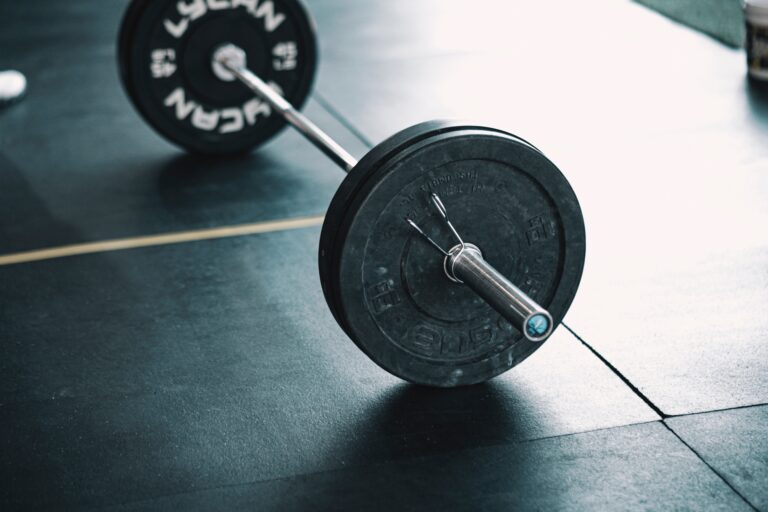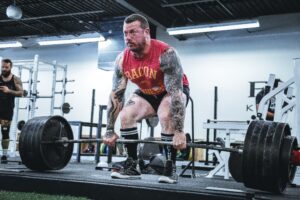
Introduction:
To start this discussion, I’d like to begin with a little history about fitness training:
The 1960s saw the gradual introduction of exercise machines into the rare strength training gyms of the time. Weight training became increasingly popular in the 1970s, and for years, the majority of gyms and health clubs were filled with rows of cardio equipment and resistance machines. These machines infiltrated the fitness industry because they were seen to be more user friendly and required less coaching or effort to perform properly.
Over the last 20-25 years we have seen a shift back to older training methods, such as freeweights and bodyweight exercises, because experts have realised that the machines don’t produce the same results. CrossFit, which now has thousands of affiliated gyms around the world, has played a significant role in this transition. CrossFit, plus most other strength and conditioning methods, has focused primarily on the barbell as their number one training tool. So, why is this?
The argument for Barbell training:
CrossFit has a huge focus on power output in its met-cons. They measure the amount of work done by the weight lifted, distance travelled, and reps performed, all within a certain time frame, to demonstrate the power output. They argue that power output is the greatest correlate to gains in fitness.
In Bodybuilding and Powerlifting, the focus is on muscle increase (hypertrophy) or strength gains. And it’s understood that the more weight that can be lifted, for the relevant rep scheme to that goal, the greater the response will be.
If you want to pick up the most weight possible, barbells are the go to tool. So, if your goals are purely aesthetic with no regard for long term health or function, traditional bodybuilding methods are probably going to serve you fairly well. And if being able to pick up the most weight possible is your goal, then barbell deadlifts, back squats and bench press are a good fit.
But the new wave of thinking in the fitness industry is all about asking the following types of questions:
“What about developing true function of your body?”
“What kind of exercises will get you to really re-connect with your body?”
“What movements will lead you away from pain?”
“What type of training will produce longevity as well as aesthetics?”
And this is where the limitations with barbell training are beginning to be realised.
Problems with Barbell Training:
The first problem with the traditional barbell exercises used in the training regimes mentioned above is that they’re all bilateral, which doesn’t match the biomechanics of most other human activities. To read more about this topic and discover the Movement Philosophy we use in Fitness for Life, read this article. I don’t believe that if trainees have imbalances in their bodies (which is most of us), bilateral exercises will help. Instead, they seem to exacerbate the imbalances.
The second problem is that lifting the most weight possible might produce power, stimulate growth hormone and develop strength (of a specific type, see below), but doing it regularly also puts a tremendous amount of vertical pressure on your joints and spine. I believe this can cause spinal compression and, in turn, disc degeneration. And extremely heavy lifting carries unnecessarily high risks of injury to other joints too. Did the human body evolve doing this kind of activity and, therefore, is it really the right thing to be doing to your spine all the time? What I’ve seen over the years is that many people start to develop back, knee or shoulder issues eventually if they persist with it over years, and particularly if they’re always chasing heavier and heavier weights.

The barbell, in fact, enables you to load up weights so enormous that you’d rarely find another way to lift them. The shape of the barbell means you can have the load right over the centre of gravity of the body. Whereas, if you’re lifting a box, sofa or boulder, the weight would be further forward of your body. This means the moment arm (the perpendicular distance of the load from the joint) is longer. My contention is that our ancestors would have rarely been lifting weights close to their max effort anyway, so although the human body is incredibly adaptive (we get stronger from exposing ourselves to heavier weights), done at very high percentages of your max, regularly, over years, isn’t what we’ve evolved to do. I think once you’ve developed a certain level of strength, the real world returns on keeping going for more diminish quite severely.
Better Alternatives:
I’ve come to discover that there are better tools. I’ve demonstrated over the last few years, through my programming and my members, how it’s possible to develop fantastic functional strength using unilateral (single leg or arm) dumbbell or kettlebell movements, where you use much less weight and therefore produce much less compression on the spine. I’ve also shown how using standing cable machine movements, which load horizontally instead of vertically, to develop strength, is much kinder on your joints.
As an example of this, try doing a single leg deadlift using a dumbbell/kettlebell in the contralateral side (opposite hand to the leg on the ground). Do it slowly and controlled and see how your posterior chain (hamstrings, glutes and back muscles) feels after a few sets. In fact, I have trainees who have predominantly trained with single leg movements (lunges / step ups) for long periods and then, when we occasionally do some heavier squatting, they find they’ve still increased their squat weights (whilst doing so with much less risk in my opinion).
When it comes to aesthetics, nutrition is actually the biggest variable when it comes to fat loss, and you can still achieve hypertrophy effectively by doing unilateral movements, so I think these tools can still be used for these goals too.

We do have barbells in the gym, but we rarely perform bilateral barbell movements. We use them more often with a landmine, and we by far prefer kettlebells, dumbbells and cables for most of our programming. When we do programme squats for strength training, for instance, we’ll use kettlebells in the goblet or rack position, and this much more closely replicates the times you might have to squat with an object in your arms in everyday life. For bilateral deadlifts, we prefer a couple of kettlebells or farmers carry handles, which is also more like the kind of objects you might have to pick up and gives you more freedom in your setup, due to not having to avoid your knees with the barbell.
The best way to decide for yourself is to come and give it a try. Do a few months of different programming using these alternative tools and see how your body feels.